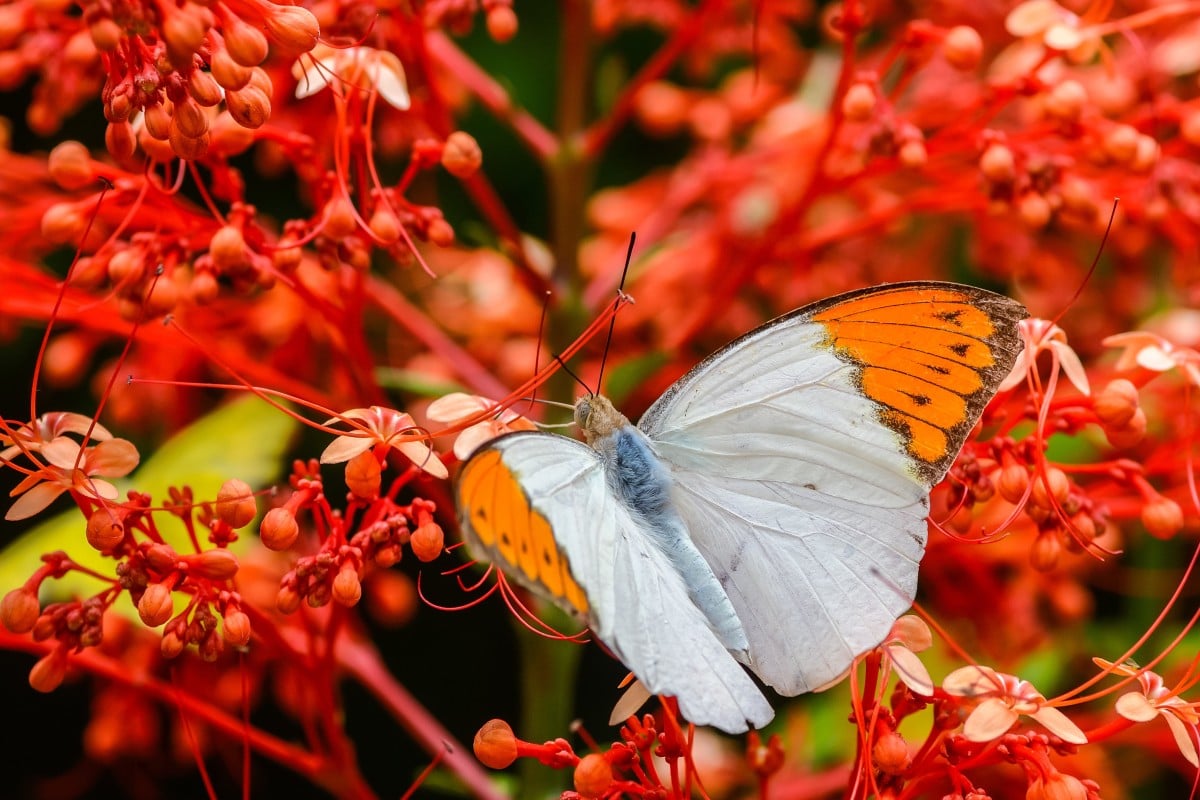
Hong Kong is home to a host of beautiful butterflies
 Great orange tip butterfly.
Great orange tip butterfly.As a whole, insects rarely hold a special place in people’s hearts. But if there’s one group of insects that is an exception to this rule, it has to be the butterflies. Since the days of the ancient Egyptians, these colourful creatures have captured our imaginations, to the point where some of us have even made a hobby out of going outside and looking for them in their natural habitat.
Though not as well-known as birdwatching, butterfly watching has nonetheless become a popular pastime in several countries. With around 240 butterfly species, Hong Kong is an ideal place for anyone with this hobby-to-be. Young Post shares tips on the best times, equipment and places for butterfly watching, as well as a few of Hong Kong’s most extraordinary species.
7 amazing animals you can find in Hong Kong
Timing
The exact best time to see butterflies varies from species to species. However, there are some general guidelines you can follow.
Butterflies are very sensitive to temperature. Generally, they are less likely to be active in cold weather (below 22°C), and the same can be said if it is too hot. Cloudiness and heavy rain are also not good weather for butterfly watching.
The best times of the year to see butterflies are between April and June and between October and November, and the best time of day to see them varies throughout the year. In the spring and summer, the best times are 9-11am and 2-4pm. In the autumn and winter, the best times are 10-11am and 2-3pm.
Equipment
You don’t need a lot to go butterfly watching. Just some binoculars and a butterfly identification guide.
Places
Common species can be found in most habitats in Hong Kong with lots of flowering plants, including parks, forests and abandoned farmland. Uncommon or rare species are best seen at the tops of hills or on secluded islands as they gather to mate. As butterflies are cold blooded and therefore need frequent exposure to sunlight to survive, heavily shaded areas are not good places to look for them.
Country parks are probably the best places to see butterflies in their natural habitat, with two of the best sites being Wu Kau Tang and Lai Chi Wo in Plover Cove Country Park. With a wide range of habitats and vegetation, nearly half of all of Hong Kong’s butterfly species live here. For those who would prefer to stay in the city, however, try Hong Kong Park which, at 48 species, has a higher diversity of butterflies than any other park in Hong Kong.
Species
Common Bluebottle: A large, common butterfly with a blue/turquoise stripe along the middle of its wings and red spots at the base of its hindwings. A very active flier, it is most easily approached when it is busy feeding from flowers.
Red-base Jezebel: A medium-sized black, red and yellow butterfly. Populations can increase or decrease throughout the year; they are more numerous (and therefore easier to see) in the winter than in the summer.
Map Wing: A small white butterfly named for the map-like lines on its wings. Normally stays close to the ground because it seeks food from puddles.
Great Orange Tip: A white butterfly with orange tips to its forewings. One of the largest species in Hong Kong. Females have black markings along the edge of their hindwings, males do not have these.
Common Evening Brown: A medium-sized greyish-brown butterfly with large eyespots on its wings to ward off predators. Unlike most butterflies, this one mostly comes out at night.
Edited by Ben Young
